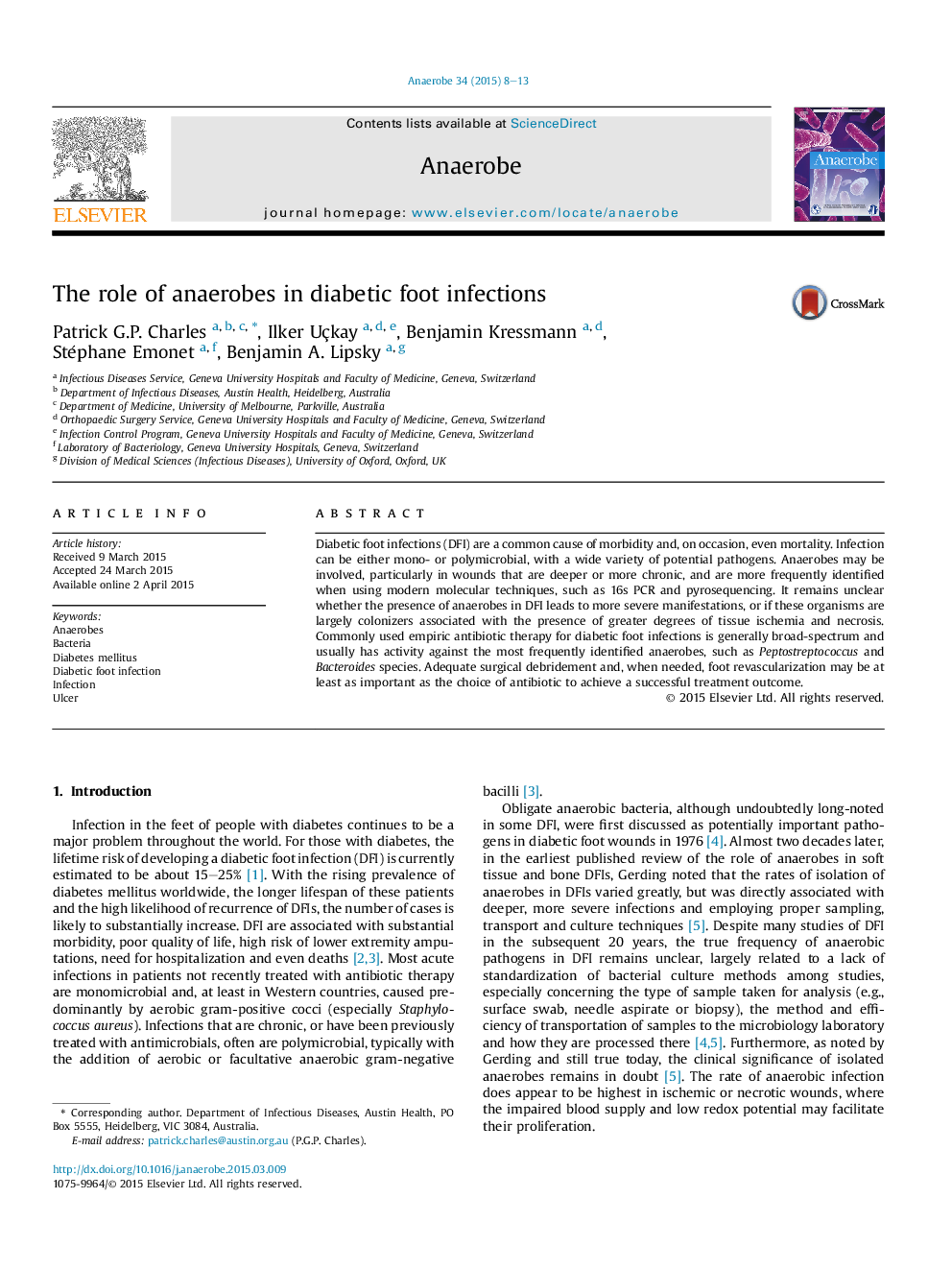| Article ID | Journal | Published Year | Pages | File Type |
|---|---|---|---|---|
| 3394934 | Anaerobe | 2015 | 6 Pages |
Diabetic foot infections (DFI) are a common cause of morbidity and, on occasion, even mortality. Infection can be either mono- or polymicrobial, with a wide variety of potential pathogens. Anaerobes may be involved, particularly in wounds that are deeper or more chronic, and are more frequently identified when using modern molecular techniques, such as 16s PCR and pyrosequencing. It remains unclear whether the presence of anaerobes in DFI leads to more severe manifestations, or if these organisms are largely colonizers associated with the presence of greater degrees of tissue ischemia and necrosis. Commonly used empiric antibiotic therapy for diabetic foot infections is generally broad-spectrum and usually has activity against the most frequently identified anaerobes, such as Peptostreptococcus and Bacteroides species. Adequate surgical debridement and, when needed, foot revascularization may be at least as important as the choice of antibiotic to achieve a successful treatment outcome.
